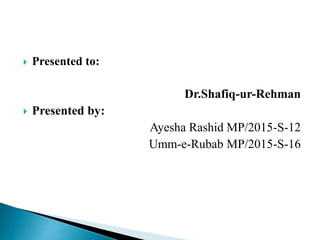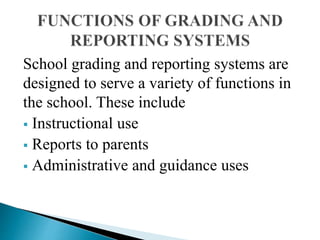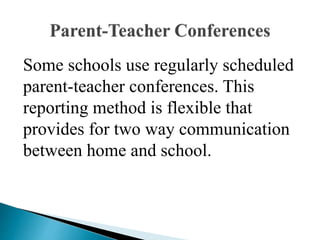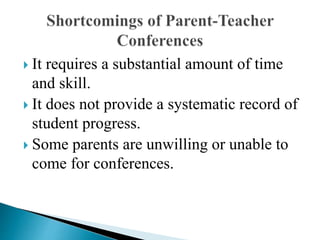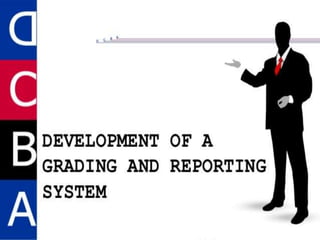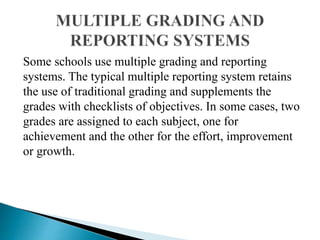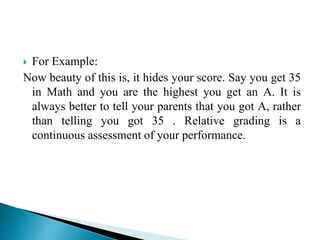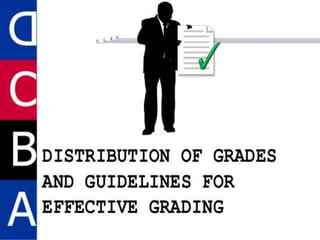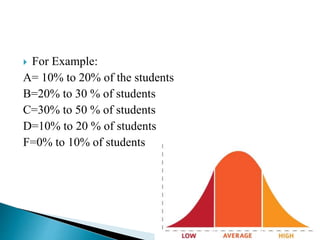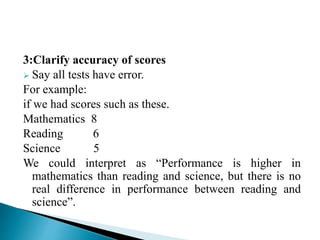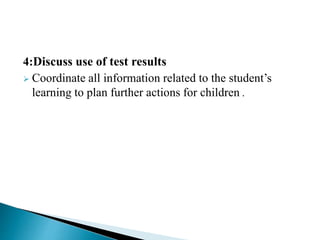The document discusses various methods for grading and reporting student progress. It begins by outlining the main purposes of grading systems, which include instructional use, reporting to parents, and administrative/guidance functions. It then describes several common grading systems like traditional letter grades, pass/fail, checklists of objectives, letters to parents, portfolios, and parent-teacher conferences. For each system, it provides details on how the system works and potential advantages and disadvantages. The document concludes by providing guidelines for developing effective grading and reporting systems and conducting productive parent-teacher conferences.

